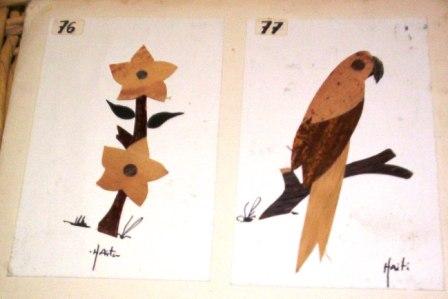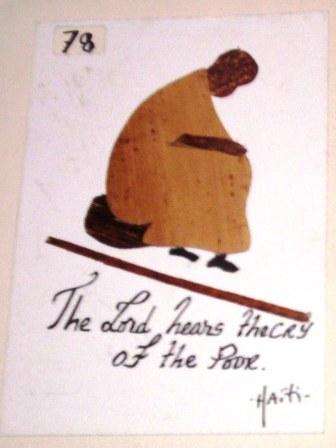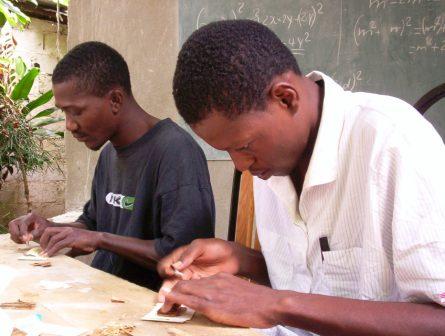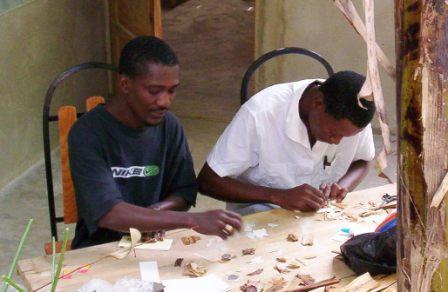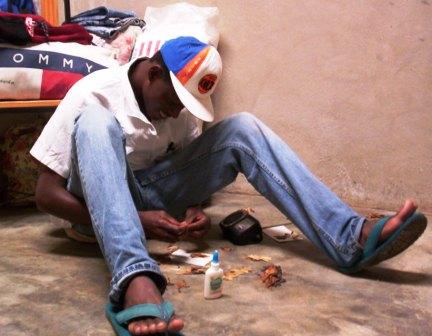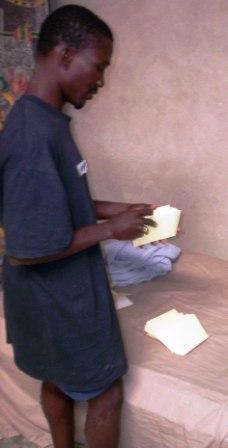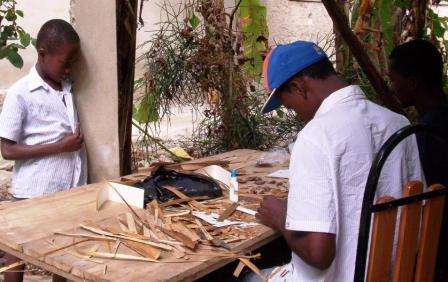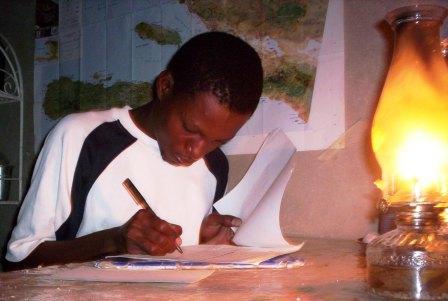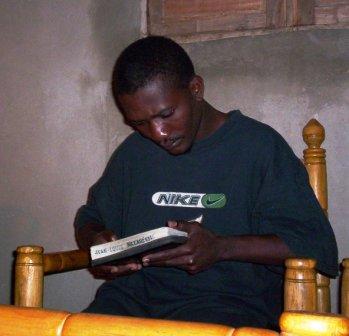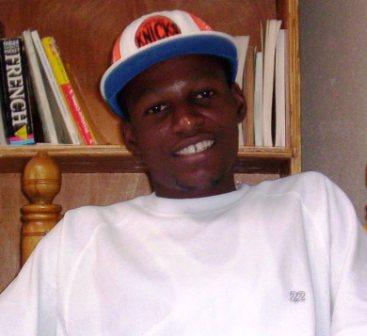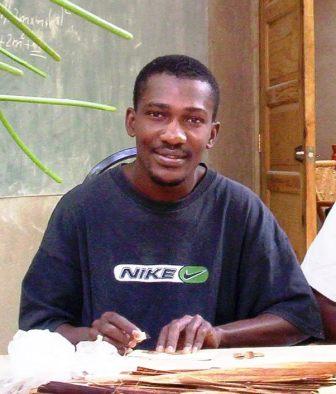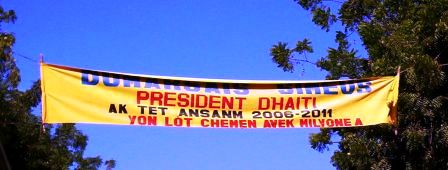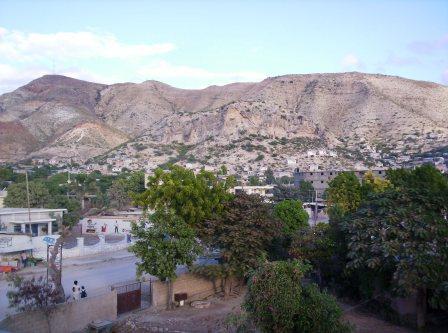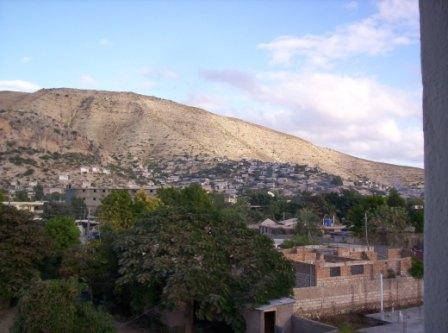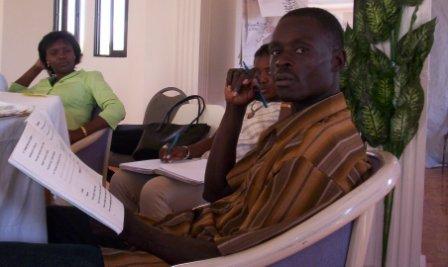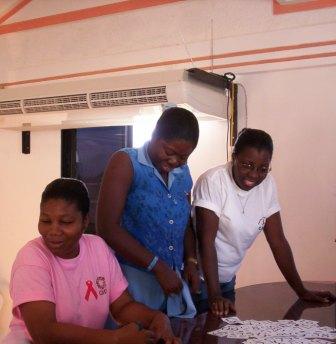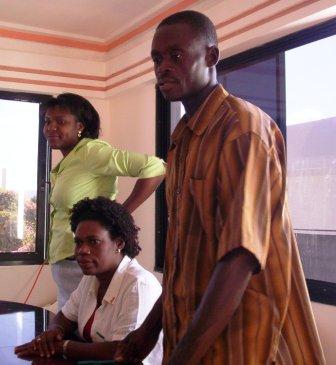I’ve been trying to figure out a way to explain the enormity of the challenge that Fonkoze faces. It’s not easy to convey.
Let’s assume I’ve already made it to the appropriate bus station. The trip to any one of them, starting from Ka Glo, is about two hours, but I’m happy to make it. It’s the price I pay for the luxury of living in the countryside, rather than Port-au-Prince, and it’s not really part of the point I want to make anyway.
Getting to Trouin from the station in Carrefour is, at least, uncomplicated. The simplest way is to climb onto a truck headed to Bainet, in south-central Haiti. The trucks that make this trip are large, open crates. They fill with cargo, stacked about seven or eight feet high, and passengers climb onto the top. If it rains, you get wet. If there’s dust, you are dusted. You hang on as best you can as you’re shaken and tossed along the road through Carrefour past Léogane up the mountain on the road towards Jacmel. You turn off the paved road at St. Etienne, and take the long, rocky, narrow road down towards Bainet. About an hour later, you hop off in Trouin. In all, it’s about four bone-shaking hours.
Or it should be. I was once on one of those trucks headed back from Trouin when an dispute erupted between the conductors and the passengers as to the correct fare. So the truck just stopped for over an hour, in a downpour, while the argument raged. I eventually gave up, got down, and walked the last hour through the rain to St. Etienne, where I got a bus back to the city. It’s the sort of thing that happens sometimes.
Getting to Baptiste from the station in Croix-de-Bouquets can be almost as simple, if you’re lucky. There are a couple of busses that make daily trips between Croix-de-Bouquets and Belladère. From there, you hire a motorcycle for the 90 minute ride southward into the mountains.
The busses are uncomfortable even on good roads, like the excellent one between Lascahobas and Belladère. You sit packed three to a bench that wouldn’t carry more than two in the States. That’s three adults: bags, backpacks, sacks, chickens, children and other luggage don’t count. If you’re on the aisle, you’ll be looking for something to do with 50% or more of your – excuse me – rear end, because it won’t all be on the bench. If you’re not on the aisle, you’ll be trying to figure out if there’s a way to add an additional joint to your legs, a way to fold them one more time, because the distance to the seat in front of you won’t be quite enough.
If you don’t get one of those busses, you’ll be taking a similar one to Mirebalais instead. Then it’s the back of one pick-up truck to Lascahobas and another from there to Belladère, where you get that same motorcycle into the mountains. It’s a full day’s work.
To get to Trou du Nord, you take a bus to Cap Haitian from the station at the base of Delmas. The ride takes six-eight hours if all goes well, cramped into those same busses. From there, it’s a twenty-minute walk to the northeast bus station, where you get an hour-and-a-half’s ride across rotten roads to Trou du Nord. It’s an hour or two longer if you need to go to Fort Libertè or Ouanaminthe. All on those busses that I’ve already mentioned.
My point in all of this is not to complain about a hard and uncomfortable job. It turns out that one gets used to such circumstances rather easily. As my friend Erik was reminding me recently, those trips can actually be fun as long as your health is good. A camaraderie can develop among passengers, and it’s an instructive pleasure to be a part of it. People talk about themselves, their family, their work, their country. All sorts of things. They exchange advice and sometimes teasing. They tell stories and they jest.
My point is rather, as I said, to talk about the enormity of the challenge Fonkoze takes upon itself as it attempts to bring banking and educational services into the countryside. I’ve written before about others aspect of Fonkoze’s challenge. I’ve written of how hard it is to prepare poorly educated women to teach other women how to read and to do so quickly and inexpensively. This would be formidable in any environment. I’ve also written about how hard it is to support such teachers through site visits because one’s presence as an observer so forcefully affects what one sees. All this apart from how basically hard it is to help a busy adult, living in a culture where there’s little reading and little to read, learn to read and write.
Fonkoze’s mission is more difficult still because it aims to reach rural women. It would be difficult enough to serve women in Port-au-Prince and a few major cities, but Fonkoze has as its goal serving women in Haiti’s hard-to-reach corners, and that’s another matter entirely.
Because the challenging voyages I just described only get one to Fonkoze’s offices in the countryside. (At least the trips to Trouin and Trou du Nord. Baptiste is somewhat different.) Getting all the way to the credit centers where educational services need to be offered can involve much more time and trouble. In other words, all that traveling still doesn’t get me into the field in any meaningful sense.
When I visited Trouin, the literacy supervisor, Rony, and I had an hour’s trip to the credit center in Meyè that we wanted to visit. And that center wasn’t one of his more distant ones. Though his office is already in the countryside, he’s responsible for centers for which site visits require overnight stays. In Trou du Nord, the supervisor, Saül, has a motorcycle to use. But he still has site visits that require an hour’s ride or more.
If you’re at Fonkoze’s Lagonav office, which requires not only between one and four busses or trucks, but also a boat, you are still a couple of hours by motorcycle from some of the more remote centers. And the roads are bad enough to make the motorcycle trip genuinely hard riding. Even for someone like me, who sits as a passenger behind the driver, who’s doing the real work.
And it’s not as though Fonkoze can choose to save its resources – its time, energy, and money – by not sending its staff to the more distant centers. Not only do the literacy teachers at work in the centers need support, but even just the credit operations require extensive travel because Fonkoze’s clients cannot be required to come even to the branch offices in the countryside. They do not have motorcycles, and they’re hard at work almost constantly building the businesses they’ve created with their loans. The couple of hours that a round trip to a Fonkoze office would require is out of the question for them. So Fonkoze credit agents take loan applications, disperse loans, and accept payments during visits to the scattered credit centers. And Fonkoze literacy supervisors get out into the field to coach teachers, encourage and evaluate students, and collect data.
And the fact that Fonkoze is a financial institution, and the fact that it spends money it receives from other institutions that have a range of their own reporting requirements, all means that, as scattered as Fonkoze’s branch offices are, and as very much more scattered still as its credit centers are, they all require a close, unified oversight. And there are over twenty branches, all over Haiti. Some of them are easier to get to than the ones I’ve mentioned, but many are not.
Trying to imagine how it’s all supposed to work for Fonkoze’s 27,000 clients, at all of Fonkoze’s 20+ branches would be overwhelming at least for me. So we just try to focus on getting jobs in front of us done. Sometimes we succeed.
That’s what makes all the traveling I do for Fonkoze really worthwhile. I see Fonkoze’s success in the excitement of its clients who are learning to read or to build their businesses or to talk about sex and protect themselves from AIDS. I get to talk to them individually and in groups. So I know that, even if we not accomplishing everything we’d like to do, there are lots of rural Haitian women pleased with what we are able to do.

